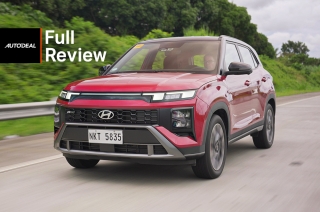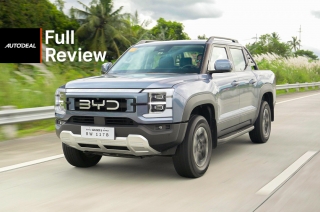
When a manufacturer introduces a new vehicle in a highly competitive market, in this case, the subcompact category, people are very quick to jump to conclusions. As with any new vehicle, it is necessary for it to go under the microscope to better understand its strengths and weaknesses. But when the establishment is challenged by a new player, it gets a whole lot tougher. After all, in a country where subcompacts are dominated by Toyota and Mitsubishi, it’s only natural that comparisons will be made, especially when it comes to the build quality, maintenance, and cost of ownership. So when Volkswagen introduced its most attractively priced subcompact in the market to date, many eyebrows were raised, and many questions were asked about its authenticity as a European vehicle. Worse, some even dismissed it as subpar because of its country of assembly and manufacturing, which happens to be China. So, let me set the record straight by saying that I spent a handful of days with Volkswagen’s Santana, and it left me pleasantly surprised.
Engine Output (HP), Acceleration, Transmission, Handling 3.5/5
Exterior & Interior Design, Quality, Fit and Finish, Ergonomics 3.0/5
Cabin Comfort, Suspension, NVH Insulation 3.5/5
Convenience Technologies, Active and Passive Safety Features 4.5/5
Amount of the vehicle you get for the price, Fuel Efficiency 4.5/5
- Safety features top its competitors
- Understated looks
- Basics done right
- No automatic transmission

Having driven a manual transmission 2007 Toyota Vios G for a few years as a college runabout, I thought it would be a great idea to get behind the wheel of Volkswagen’s Santana, a product that they’ve been pushing as a direct competitor to the Vios J. The Santana assigned to me had a nice, deep black color, almost bordering on navy blue. Having already seen it at the big launch of Volkswagen’s five new vehicles for the local market, I kinda knew what I was getting into.
From the outside, the Santana shares a lot of its styling cues from the rest of the Volkswagen family. The strong and emphasized crease on the beltline was immediately recognizable, as was the front grille. The taillights are tweaked slightly when compared to the Polo, and the addition of a rear fog light for bad weather is always a great touch; it’s a clean and composed look that elicits no drama. I like that. From the front, you get standard halogen in reflector housings with clear indicators. No front fogs on this trim level, but we can hopefully expect Volkswagen Philippines to bring in other variants soon. The 14-inch steel wheels are perfectly fine, and give off a no-nonsense vibe. Kudos to Volkswagen for color matching the side mirrors to the body, and adding LED wing indicators. Overall, the exterior of the Santana is mature; a car that could blend in, but at the same time still be clearly identifiable as a Volkswagen when you do a double take.
The keyfob of the the Volkswagen is weighty and feels solid, and the fact that it has a button to remotely open the trunk is a plus. Keyless entry and locking is also standard. Once you step inside, you’re greeted by a predominantly black cabin. Plastic is used extensively, but efforts were made to make everything fit well and tight. It’s what you expect at this price range, but the meaty steering wheel of the Volkswagen feels nice. Even the passenger side airbag has been hidden pretty well. The Santana also has an abundance of cupholders and places to store items, and the 12v socket to charge gadgets is conveniently placed. Cloth seats are supportive and offer a decent range of adjustability, plus they look pretty neat. The radio is an AM/FM combo with a CD player and support for SD/USB playback with two speakers. Aircon controls are a manual affair, but the knobs and switches feel good for this price range.
Here’s the good stuff, some of the few things that surprised me about the Santana were actually found in the driving and user experience. For the price of P686,000, you get manually adjustable headlight leveling, speed sensing door locks, ABS, and ISOFIX mounts for child seats. That’s already in addition to an immobilizer and the other niceties found in the exterior and on the keyfob. On to the best part: the driving.
The Santana is powered by a 1.4-liter gasoline engine that’s good for 89 hp and 132 Nm of torque, and is mated to a 5-speed manual transmission. It’s a good enough engine for daily duties, but the best part is how quiet it is when in the cabin at idle or at speed. I forgot the engine was on a few times; thinking I stalled the Santana. Speaking of stalling, I did once, on an incline, as I forgot to put more gas into the mix as I was releasing the clutch. The clutch is soft and has long travel, but a high biting point. A bit of practice before any steep gradients and anyone will be fine (except me, apparently). Around the city, the Santana is a joy to drive; the large steering wheel provides plenty of grip for your hands during tight maneuvers, and the chassis just feels solid and planted. The Santana is peppy and nice when going through the gears; each shift feels positive. I just wish the shifter itself wasn’t so dull.
Speed bumps and road imperfections were handled decently and without complaint. It’s not a magic carpet, mind you, but the Santana does feel legitimately German when dealing with questionable road conditions. Visibility is good as the windows are large and the pillars are small. I do wish the side mirrors were larger, but the addition of a driver’s side convex mirror to spot vehicles in your blind spot is a nice touch.
On the expressway, the Santana feels reassuringly stable. That planted feeling when driving in the city is present at high speed. In the triple digits and even if the engine tachometer stays pretty high, the engine doesn’t annoy. Lane changes and sweeping turns are also handled very well, as the chassis feels balanced and composed. Must be that laser welded construction at work. As a testament to the comfort and ride of the Santana, my mother fell asleep in rush hour traffic and on the highway, even when doing 100 kmh to keep up with traffic. It’s a hassle free driving experience that’s not just pleasant, but reminds us of how all Volkswagens drive.
So, if you can’t tell by now, I’m a huge fan of the Santana. Having lived with a vehicle in the subcompact segment as a daily for a few years, I knew what to expect, and I still found myself wishing the Santana was that vehicle. In a market where basic is usually associated with under equipped or cheap, the Santana walks (drives) the fine line between essential and value for money. It has nice touches that set it apart from its competitors in terms of safety, comfort, and looks, at a price that’s not just reasonable, but justifiable if you’re in the market for a subcompact sedan.

Yes, the Santana is made in China. Yes, Filipinos have a stigma against Chinese automobiles. But here are some facts: China and Volkswagen have been working closely and manufacturing vehicles for the Chinese market for over 40 years, Volkswagen outsells any other brand in China, and the low price is due to ASEAN trade agreements. In China, a market that’s even more competitive than the Philippines, the Santana thrives and outsells any other subcompact in its class. Can it enjoy similar success here? I certainly hope so.
Those looking at the P600,000 to P700,000 peso price range for their next vehicle will have plenty to like here. The Volkswagen Santana gets basics so right, and then some. So if you’re shopping around, you need to take a closer look at Volkswagen, as its new products step in the right direction to win over more Filipinos. For a few tens of thousands of Philippine pesos more, you can have a safe, reliable, and smart looking vehicle to keep up with daily life.
Latest Review
-
2026 BYD eMAX 7 Review / Review
Can the BYD eMAX 7 prove that electric MPVs work in the Philippines? With 201 hp and 530 km of range, it just might.
4.3 / 5 -
2026 Hyundai Creta N-Line Review / Review
The Creta N-Line isn’t just a Creta with sporty looks; it’s got the performance and bite to back up its style.
4.3 / 5 -
2026 BYD Shark 6 DMO Review / Review
Can a hybrid pickup truck break the mold of what pickup trucks can be? The Shark 6 DMO has something to say about that.
4.6 / 5
Popular Articles
-
Electric Vehicles in the Philippines for under P1 million
Jerome Tresvalles · Aug 19, 2025
-
Top 3 Cars For Every Lifestyle—What Cars Are Right For You? | Behind a Desk
Caco Tirona · Apr 24, 2024
-
5 Tips to Maximize Fuel Efficiency
Jerome Tresvalles · Sep 09, 2024
-
Five driving habits that are draining your fuel tank
Jerome Tresvalles · Jun 24, 2025
-
Can engine braking harm your engine?
Jerome Tresvalles · Sep 11, 2025
-
Do electric cars even need maintenance?
Jerome Tresvalles · Oct 23, 2024
-
Best vehicles for an active outdoor lifestyle
Shaynah Miranda · Jul 25, 2024
-
How to drive different types of vehicle transmissions
May 23, 2024
-
5 easy ways to keep your car interior clean
Allysa Mae Zulueta · Nov 15, 2021
-
How to survive Metro Manila traffic
Earl Lee · Aug 16, 2022















